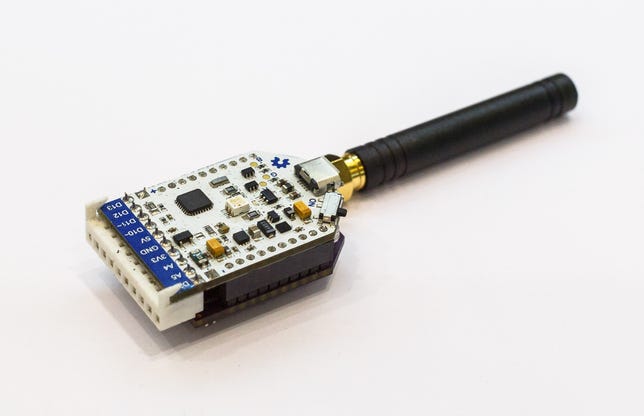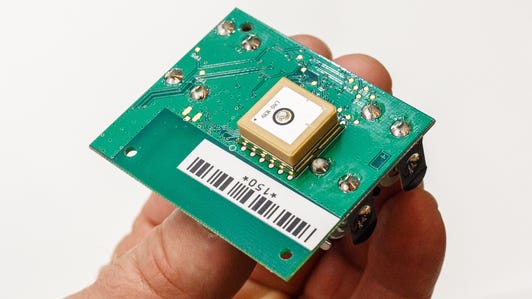
Stephen Shankland/CNET
Sigfox, a French company that’s developed a network tailored for electronic sensors and a host of other devices, will see its network arrive in Denmark next year through a partnership announced Tuesday.
A Copenhagen-based startup that launched in 2005, IoT Denmark, will bring partial Danish support for the Sigfox network this summer and full coverage of the country by May 2016, the companies said.
Denmark will join France, Spain, the Netherlands and Portugal as a full-country Sigfox supporter. The network also is available in several cities in the UK, US, Germany, Italy, Poland, Ireland, Chile and Colombia. Sigfox raised $115 million earlier this year from industrial, telecommunications and satellite companies and has lined up a range of partners who use its network for deterring auto thefts, managing spaces in parking lots, tracking medical patients, monitoring water consumption and making sure refrigerated shipments stay properly cool.
Sigfox could help usher in the era of the Internet of Things — the idea that network connections will come to light bulbs, traffic signals, door locks, elevator control panels, cars, clothing and countless other objects. Those devices could transform how we live, with refrigerators warning us of impending hardware failure and subway trains telling our smartphones the best schedule.
That business potential has caught the interest of the chipmaking division at consumer electronics giant Samsung, too. In May, Samsung Electronics announced its Artik line of processors geared for Internet-connected devices, and on Monday, Samsung and Sigfox plan to announce a partnership. The Korean company also has an Internet of Things push stemming from its 2014 acquisition of SmartThings.
Devices for Sigfox’s super-cheap network (pictures)






Global coverage is crucial for Sigfox. Network availability in this or that country is useful for businesses operating there, but companies selling products or offering services across the world need more than a few countries of coverage. A Sigfox-based car tracker won’t help much if thieves can just drive a stolen vehicle across the border.
And Sigfox also has a big competitive threat: the fifth generation of mainstream mobile networking. These 5G networks should start to arrive in about 2020 as a faster alternative to the 4G networks today’s modern smartphones use today.
5G is still in the early planning stages, but it’ll benefit from massive adoption when it arrives. Sigfox’s network has the advantage of working now, but it’s for a much narrower niche. Where 4G cellular networks can send and receive megabits of data per second and 5G could push that up to gigabits per second, Sigfox’s network can only send 140 12-byte messages per day. That’s not enough for email, much less YouTube videos.
But it is enough for devices — for example, thermometers that just have to report back hourly so a hotel knows its rooms aren’t too hot or cold. And Sigfox’s network is very cheap to use: $1 per device per year for those with 50,000 or more devices attaching. Sigfox radio hardware also is cheap and consumes little power.
And even just a tiny part of the Internet of Things could be a big deal. International Data Corporation forecasts that global spending on the Internet of Things will grow from $656 billion in 2014 to $1.7 trillion in 2020. That includes devices and, increasingly, services that are built to use those devices, IDC said.




